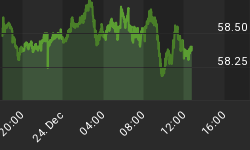The following is part of Pivotal Events that was published for our subscribers March 31, 2011.
SIGNS OF THE TIMES:
"UK Consumer Confidence Fell to a Record Low in February" ~ Reuters, March 23, 2011
We wonder if interventionist economists would describe this as "inflationary de-expectations".
"U.S. Crisis Was Worse Than 1930s, Ex-Fed Governor Mishin Says" ~ Bloomberg, March 28, 2011
We thought it would be much the same as 1929, or any other post-bubble crash. Markets lose liquidity, speculators and policymakers panic. Then when it's over policymakers boast that without intervention the panic would not have ended.
Without "stimulus" financial history would have been one continuous panic. The mind boggles! When will policymakers discover that financial markets always clear and always on their own?
To be serious, most global markets ended a classic crash in the classic manner - in November 2008 and then were enjoying a classic rebound. Except US markets when it was discovered that President Obama actually is Marxist-Fascist. This is the ultimate bi-polar disorder - bad enough in Chicago, but highly-dangerous in the White House.
American markets suffered an additional crash from January to March of 2009.
This week's reports included that house prices (Case-Shiller) took a "sharp decline" on the January number. This really confirms that "stimulus" does not go into losers, but goes into winners. Obviously, to speculative excess.
How Well Have The Winners Been Doing?
Well enough to push our Momentum Peak Forecaster into play for the first time since 2006 as the US housing mania peaked. On data back to 1970, this indicator has anticipated the end of wild speculation by about three months.
There have been seven signals when the Forecaster reached 1.21 or higher. Only the example in 2004 was not associated with a speculative blow out. As we are in the third month since the signal at the end of the year, it is worth reviewing track record:
TRACK RECORD
| SIGNAL | PEAK EVENT | PEAK DATE | LEAD | |
| 1.23 | Nov. 23, 1973 | Commodities (CRB) | Feb. 26, 1974 | 3 Months |
| 1.37 | Nov. 9, 1979 | Gold & Silver | Jan. 21, 1980 | 2 Months 13 Days |
| 1.31 | May 22, 1987 | Stock Market DJIA | August 7, 1987 | 2 Months 17 Days |
| 1.36 | Feb. 13, 1998 | Narrowing Spreads in Euroland (LTCM) | May 1998 | 3 Months |
| 1.27 | April 9, 2004 | No Phenomenal Event | ||
| 1.28 | May 12, 2006 | Housing | June 2006 | 1 Month |
| 1.21 | Dec. 31, 2010 | AOM * | ?? | ?? |
(*AOM = All-One-Market)
When the Forecaster registered 1.28 at the end of December we thought that the speculation would not reach levels achieved in the frenzy in precious metals in 1980. That one registered 1.37.
The 1973 example reached 1.23 so we have observed that the action could become more excited that with that outstanding rally in commodities.
The chart of the Momentum Peak Forecaster is attached to show the dramatic spikes and declines. Within the latter, there is a rebound after the initial hit that has provided some interesting timing.
With the culmination of the 1973 commodity boom the rebound in our indicator completed 13 weeks later and that is when the speculation collapsed.
In the 1980 mania in precious metals the rebound ran for 10 weeks to January 21 when the frenzy ended.
This time around the Forecaster set its high on December 31 and the rebound is at the 13th week.
Important Tests
Front-line items being tested are the senior stock indexes, base metal and agricultural indexes. Action in the latter two is summed up in the CRB, which is also doing the big test.
As the hot games have been working on the test, the US dollar has been working at setting a bottom. Once completed an intermediate rally would follow. The initial sell-off in the formerly hot items could also be intermediate.
However, when the frenzy was in commodities the recession started with the signal in November, 1973, and with the peak in precious metals in January 1980.
Reviewing this lengthy pattern may seem repetitive compared to other research services that are always recommending "new" stock stories, or repeating every week that the Fed can manage any situation.
Bear with us as actually experiencing great financial events involves great excitements, periods of complacency and great dismays. Participants in the South Sea Bubble of 1720, or in the "Roaring Twenties", experienced much the same emotions.
CURRENCIES
This sector is where we differ from the mainstream. Dollar depreciation and excessive Fed issuance does not necessarily drive prices up. Our view is that speculative rushes allow the Fed to depreciate. Without speculators bidding up prices on margin central banks could not impose their evil.
Mister Margin and Mother Nature force the credit cycle upon the Fed - it is not the other way around. Previous generations called it "pushing on a string".
As we have been noting, the DX slumped three times to an RSI of 30 which provides the oversold needed for a low. The other condition is the Sequential Buy pattern and the dollar had to remain soft into last week.
The chart below shows the "Buy" pattern in "magenta".

The US dollar is poised for an intermediate rally.
Link to April 1, 2011 'Bob and Phil Show' on Howestreet.com: http://talkdigitalnetwork.com/2011/04/cornice/
















